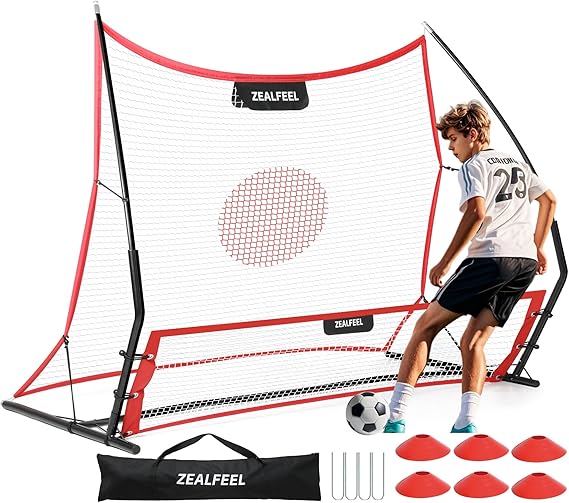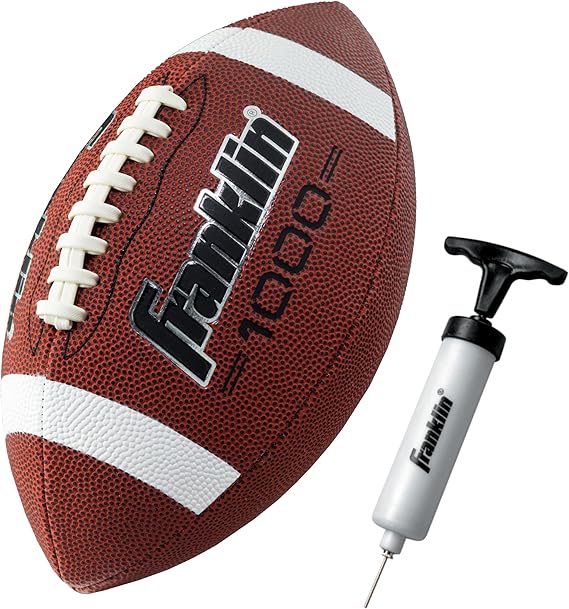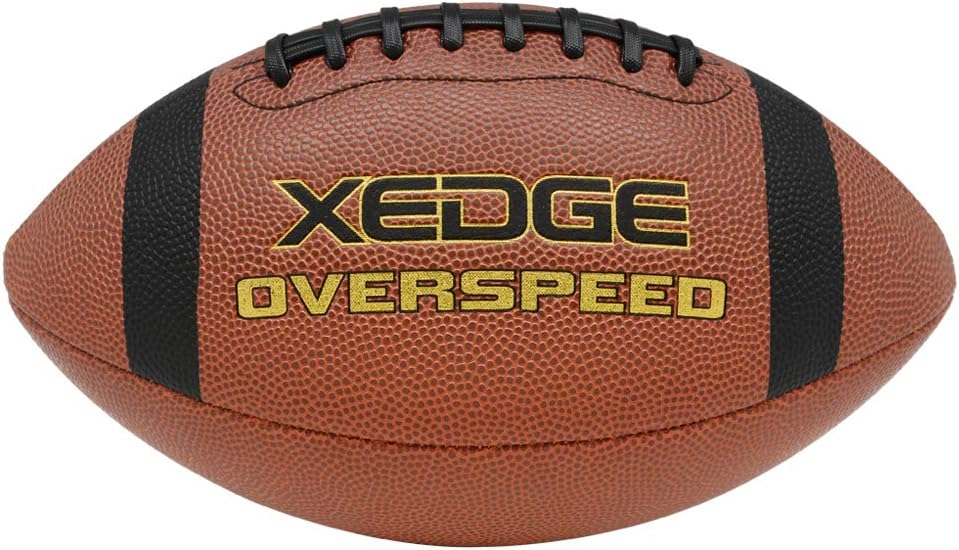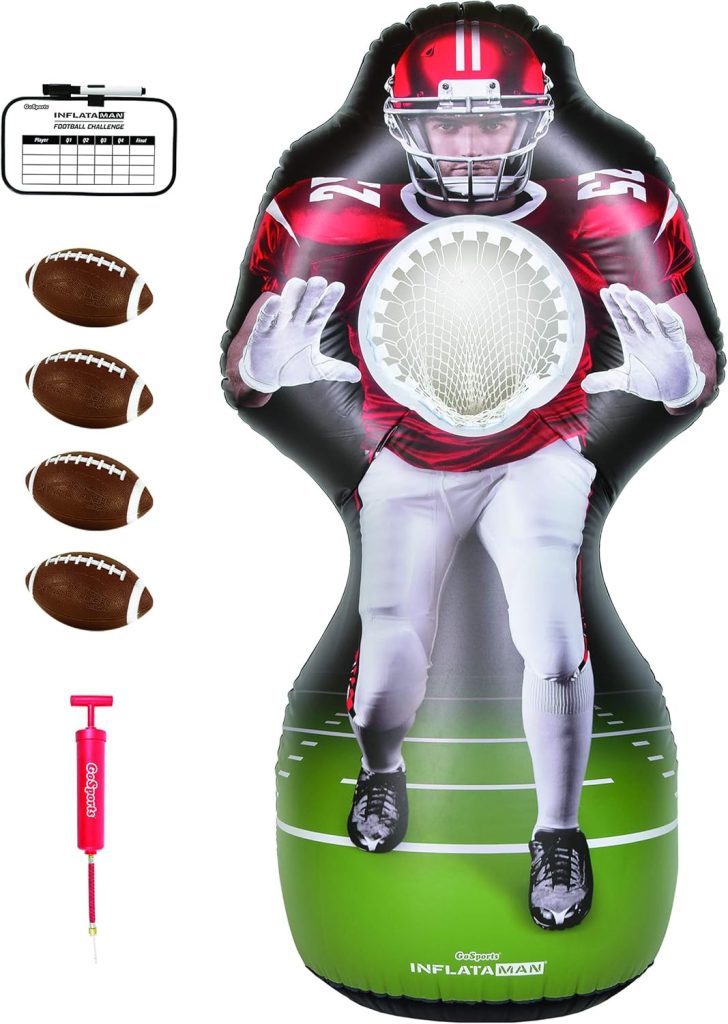Football Size Chart
| Category | Age Group/Use | Football Size | Length | Circumference | Weight | Recommended Usage |
|---|
How to Use:
- Copy the code into an HTML file.
- Open the file in any modern web browser.
- Select a category from the dropdown to see the corresponding football size information.
This tool provides an interactive way to display the football size chart and is suitable for anyone looking for information on the correct football size for different age groups or levels of play.
Looking for the perfect fit? Check Out These Best-Selling Football.






Here’s a full version of the Football Size Chart for various types of footballs, categorized by age group or use case:
Football Size Chart
| Category | Age Group/Use | Football Size | Length | Circumference | Weight | Recommended Usage |
|---|---|---|---|---|---|---|
| Size 1 (Mini) | Ages 4–6 | Mini Football | 8.5–9 inches (21.5–23 cm) | 17–18 inches (43–46 cm) | 0.5–1 lb (0.23–0.45 kg) | Practice/Starter football |
| Size 2 (Junior) | Ages 7–9 | Junior Football | 9–9.5 inches (23–24 cm) | 18–19 inches (46–48 cm) | 1 lb (0.45 kg) | Beginner youth football |
| Size 3 (Youth) | Ages 9–12 | Youth Football | 9.5–9.75 inches (24–25 cm) | 19–20 inches (48–51 cm) | 1–1.25 lb (0.45–0.57 kg) | Youth football leagues |
| Size 4 (Intermediate) | Ages 12–14 | Intermediate Football | 9.75–10 inches (25–26 cm) | 20–21 inches (51–53 cm) | 1.25–1.5 lb (0.57–0.68 kg) | High school, beginner high school players |
| Size 5 (Regulation) | Ages 14+ / Adults | Regulation Football (Official) | 10.5–11 inches (26.5–28 cm) | 21–22 inches (53–56 cm) | 1.5 lb (0.68 kg) | High school, college, professional players |
| Size 6 (Pro) | Adult Pro/Elite Players | Pro Football | 10.5–11 inches (26.5–28 cm) | 21–22 inches (53–56 cm) | 1.5–1.75 lb (0.68–0.79 kg) | Professional/Elite play |
Breakdown by Size:
- Size 1 (Mini)
- Length: 8.5–9 inches (21.5–23 cm)
- Circumference: 17–18 inches (43–46 cm)
- Weight: 0.5–1 lb (0.23–0.45 kg)
- Recommended Use: This is the smallest size, typically used for very young children to practice basic handling skills. Great for recreational play and as a starter football.
- Size 2 (Junior)
- Length: 9–9.5 inches (23–24 cm)
- Circumference: 18–19 inches (46–48 cm)
- Weight: 1 lb (0.45 kg)
- Recommended Use: Suitable for children around the age of 7 to 9. It is commonly used in early learning stages of football, helping young players develop their grip and technique.
- Size 3 (Youth)
- Length: 9.5–9.75 inches (24–25 cm)
- Circumference: 19–20 inches (48–51 cm)
- Weight: 1–1.25 lb (0.45–0.57 kg)
- Recommended Use: Often used by players between 9–12 years old. It’s typically used in youth leagues for practice and play, with a focus on fundamental skills.
- Size 4 (Intermediate)
- Length: 9.75–10 inches (25–26 cm)
- Circumference: 20–21 inches (51–53 cm)
- Weight: 1.25–1.5 lb (0.57–0.68 kg)
- Recommended Use: This size is designed for older youth players, typically ages 12–14. It’s commonly used for high school-level or intermediate-level leagues.
- Size 5 (Regulation)
- Length: 10.5–11 inches (26.5–28 cm)
- Circumference: 21–22 inches (53–56 cm)
- Weight: 1.5 lb (0.68 kg)
- Recommended Use: This is the official size for high school, college, and professional level football play. Players aged 14 and up typically use this size in competitive leagues.
- Size 6 (Pro)
- Length: 10.5–11 inches (26.5–28 cm)
- Circumference: 21–22 inches (53–56 cm)
- Weight: 1.5–1.75 lb (0.68–0.79 kg)
- Recommended Use: This size is designed for elite and professional players. It is mainly used in the NFL and other top-level football leagues.
Notes:
- Size 5 is the most commonly used size for competitive games at the high school and professional level.
- Size 6 (Pro) is used by professional athletes and is less common in youth leagues.
- Smaller footballs (Sizes 1–3) are often used in practice or for learning basic skills, with Size 5 being the minimum used for formal games.
This chart covers all the major types of football sizes for a variety of age groups and playing levels, making it easy to choose the right size for your needs.
frequently asked questions
1. What are the different sizes of footballs?
Footballs come in five standard sizes:
- Size 5 (Standard) – Ages 12 and above, professional and international matches
- Size 4 – Ages 8-12, youth training and matches
- Size 3 – Ages 5-8, junior-level training
- Size 2 – Ages 3-5, skill development and fun
- Size 1 (Mini) – All ages, mainly for skills practice and souvenirs
2. What is the official size of a FIFA-approved football?
A FIFA-approved match ball must be Size 5, weighing between 410-450g with a circumference of 68-70 cm.
3. What size football should kids use?
- Under 8 years old → Size 3
- 8-12 years old → Size 4
- 12 years and older → Size 5
4. How does football size affect performance?
A larger football requires more power to kick, while a smaller ball helps develop ball control and skills at younger ages.
5. What is the weight of different football sizes?
- Size 5: 410-450g
- Size 4: 350-390g
- Size 3: 300-340g
- Size 2: ~250g
- Size 1: ~200g
6. Is there a difference between match balls and training balls?
Yes! Match balls are made with higher-quality materials for better performance, while training balls are more durable for everyday use.
7. What size football is used in the English Premier League, FIFA World Cup, and UEFA Champions League?
All professional leagues and tournaments use a Size 5 football.
8. How do I choose the right football size for practice?
If you’re training for professional play, Size 5 is best. For younger players, use an age-appropriate ball to improve control and technique.
9. Does the material of a football matter?
Yes! Synthetic leather is commonly used for professional balls, while rubber and PVC are more durable for training.
Conclusion
Choosing the right football size is essential for improving skills, ensuring safety, and enhancing overall gameplay. Whether you’re selecting a ball for a child, a training session, or a professional match, understanding the correct size and weight can make a significant difference. Always consider age, skill level, and the intended use when picking a football.
By using the appropriate ball, players can develop their techniques effectively and enjoy the game to the fullest. ⚽🎯






